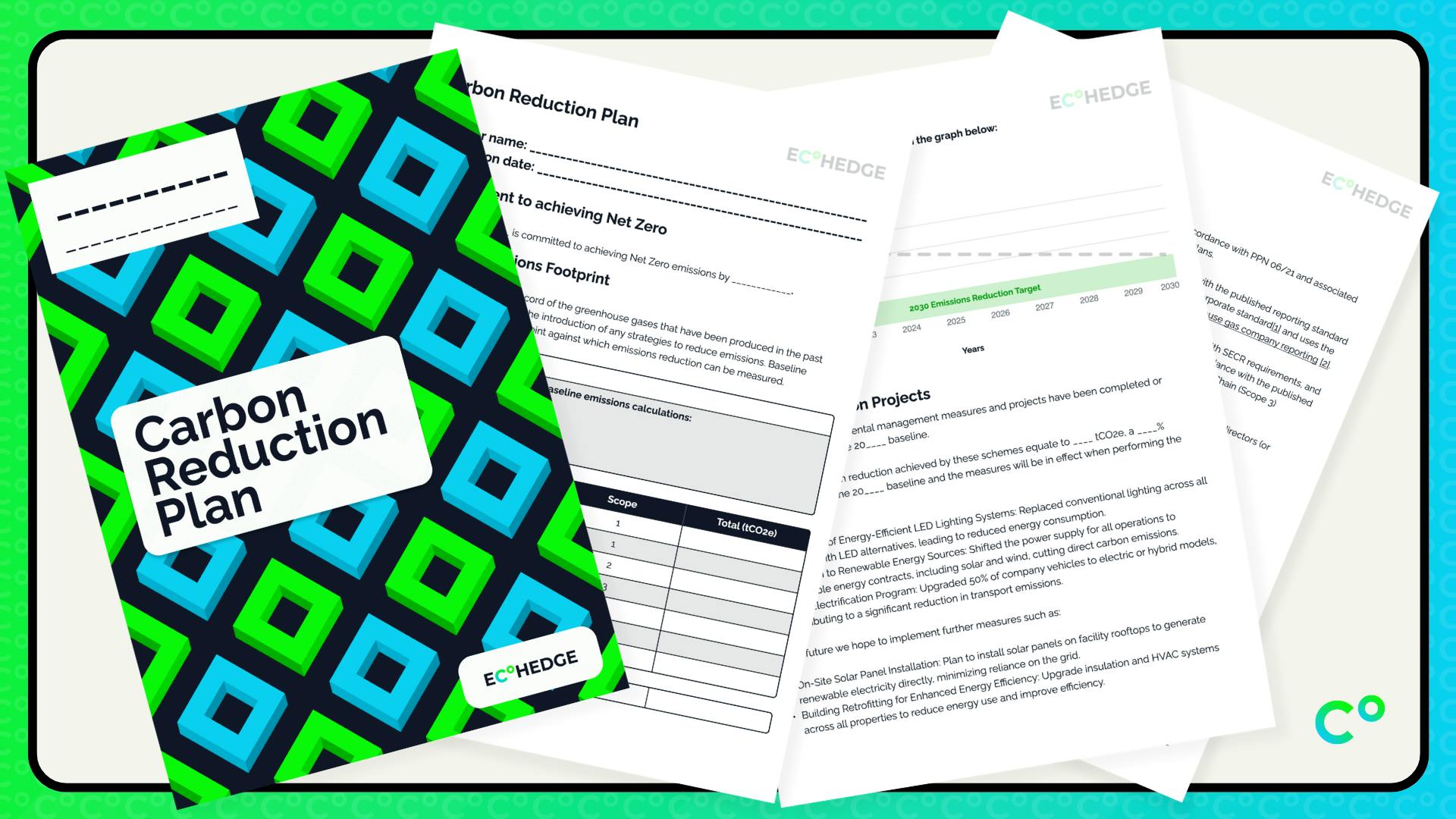Transitioning to net zero is a complex journey for businesses, but an imperative one to ensure our collective sustainable future.
By embracing methodologies like carbon accounting and management strategies centered around emissions reductions, companies can chart a credible path to decarbonization and climate leadership.
This article will provide an in-depth explainer on what net zero means for businesses, the principles and tools needed for carbon accounting, overcoming obstacles, and activating net zero strategies through measurable climate action.
Charting the Course to Net Zero Sustainability
Understanding Net Zero Carbon Meaning in a Corporate Context
Net zero carbon refers to achieving an overall balance between the greenhouse gas emissions produced by a company and emissions removed from the atmosphere. For businesses, this means reducing their carbon footprint as much as possible, then using carbon offsets or insets to neutralize any remaining emissions. Reaching true net zero requires fundamental changes to operations, energy sources, supply chains, and business models. However, the transition brings significant benefits.
To develop a robust net zero strategy, companies must first measure their carbon footprint across all scopes as defined by the Greenhouse Gas Protocol. This provides a emissions baseline to track progress against. Businesses should then set science-based targets to reduce emissions in line with 1.5°C pathways. Finally, they can utilize high-quality carbon credits or invest in removal solutions to offset any residual emissions. Reliable carbon accounting software like EcoHedge Lifecycle can simplify this entire process.
The Business Imperative for Embracing Net Zero Sustainability
Multiple global forces are propelling businesses to embrace net zero emissions amidst the climate crisis:
- Investor pressure - Shareholders increasingly expect climate risk mitigation and net zero plans from companies. This facilitates access to sustainable finance.
- Competitive advantage - Early adopters of net zero can boost brand reputation and attract ethically-minded talent and customers.
- Preparing for regulation - More stringent climate policies are imminent. Proactive transition to net zero provides regulatory cushion and economic resilience.
- Social license to operate - The societal mandate for climate action is growing. Net zero strategies grant companies their social license to operate.
Forward-thinking companies recognize the clear business case for net zero sustainability. The EcoHedge platform provides the tools needed to seamlessly transition towards this imperative goal.
What does it mean to go net zero?
Going net zero refers to achieving a balance between the greenhouse gas emissions produced and those removed from the atmosphere. For businesses, this means reducing your carbon footprint as much as possible, then balancing out any remaining emissions through carbon offsets or removal strategies.
Some key things to know about net zero:
- Net zero is aligned to the Paris Agreement goal of limiting global temperature rise. By going net zero, businesses are contributing to climate change mitigation efforts.
- There are multiple possible pathways to achieve net zero, including switching to renewable energy, improving efficiency in operations and supply chains, using electric vehicles, and investing in carbon removal projects.
* Carbon accounting tools like EcoHedge are invaluable for measuring emissions accurately across net zero carbon meaning scopes, tracking reduction progress, identifying priorities and opportunities, and reporting to stakeholders.
- Offsets can help bridge the gap but should not be the only tactic - the focus is still reducing actual emissions associated with the business as much as feasibly possible.
Transitioning to net zero requires commitment, investment and a long-term strategy focused on decarbonization across the whole value chain. For SMEs, software like EcoHedge provides automation and guidance for this sustainability journey.
What does transition to net zero mean?
Transitioning to net zero refers to the process of reducing a company's carbon footprint down to net-zero emissions. This means cutting greenhouse gas emissions as close to zero as possible, while offsetting any remaining unavoidable emissions.
There are a few key elements involved in reaching net zero:
- Measuring your carbon footprint - The first step is to accurately measure your company's carbon emissions across all scopes. This provides a baseline to track reductions against.
- Reducing emissions - Companies then implement emissions reduction initiatives - from energy efficiency projects to switching to renewable power. The goal is to aggressively cut carbon emissions across operations.
- Offsetting remaining emissions - Even after reductions, some difficult-to-decarbonize emissions may remain. These can be counterbalanced by funding external greenhouse gas removal projects, like reforestation efforts.
- Reporting & validating progress - Companies track and publicly report their emissions reductions over time. Progress needs to be validated by independent auditors to confirm net zero status.
Reaching net zero requires comprehensive measurement, reduction, and offsetting of emissions. For many companies, it represents a complete transformation of business operations. But with the right carbon accounting tools and expertise, hitting this critical climate target is possible.
What is net 0 terms?
Net 0 terms, also known as "payable on receipt," means that payment is due upon delivery of goods or services. This payment structure can help new businesses build trust with customers by eliminating risks associated with extending credit.
Here are some key things to know about net 0 terms:
- Payment is due immediately - The customer must pay the invoice amount when they receive the product or service. This differs from net 30 terms where customers have 30 days to pay.
- Helps manage cash flow - For new companies, requiring upfront payment ensures they get paid without having to worry about chasing late payments. This helps with managing cash flow.
- Builds customer trust - By not requiring any deposit or upfront payment, net 0 terms show customers that the business is confident in delivering high-quality products/services.
- Works best for small transaction values - Large invoice amounts may be difficult for some customers to pay immediately. Net 0 terms work best for smaller purchases.
- Important to have clear contracts - To avoid disputes, its critical to have clear contracts outlining payment terms, delivery timelines, refund policies, etc.
In summary, net 0 terms can help new entrepreneurial companies establish credibility by eliminating payment risks while building trust and loyalty with customers. Defining clear expectations upfront is key to success.
What are the 5 principles of net zero?
Businesses aiming to achieve net zero emissions can follow these key principles:
Reduce Energy Consumption
The first step is to implement energy efficiency measures to reduce overall energy use. Simple changes like installing LED lighting, improving insulation, and upgrading to energy-efficient equipment can significantly cut emissions. Conducting an energy audit pinpoints high-impact savings opportunities.
Switch to Renewable Energy
Transitioning to renewable energy sources like solar, wind, and hydropower is essential for decarbonization. Consider installing onsite solar panels or signing long-term agreements to source clean electricity.
Electrify Processes
Swapping fossil fuel-powered systems for electric alternatives powered by renewable energy enables further emissions reductions. Heat pumps, induction stoves, and electric vehicles are some of the technologies businesses can adopt.
Offset Remaining Emissions
After minimizing energy consumption and maximizing renewable energy use, unavoidable residual emissions can be addressed via certified carbon offsets. These fund external emission reduction projects to counterbalance hard-to-abate emissions.
Track and Validate Progress
Robust carbon accounting provides visibility into emission sources and reductions. Annual third-party audits validate net zero progress, ensuring transparency for stakeholders. Ongoing measurement and verification confirm sustained decarbonization.
Following these principles builds a comprehensive net zero strategy targeting both operations and value chain emissions. The path empowers businesses to reduce environmental impact and meet stakeholder expectations.
sbb-itb-919600f
Carbon Accounting: The Backbone of Net Zero Strategies
Carbon accounting provides the foundation for organizations to measure, understand, and reduce their greenhouse gas (GHG) emissions on the path to net zero. By quantifying emissions across operations and value chains, companies gain visibility into major sources of emissions and opportunities to curb them. Robust carbon accounting enables strategic emission reduction targets, informs critical decisions, and ensures accountability through consistent tracking and reporting. As stakeholders demand urgent climate action, accurate carbon accounting is crucial for businesses to substantiate their environmental claims and navigate the transition to a low-carbon future.
Introduction to Carbon Accounting Frameworks
Several authoritative standards outline structured methodologies for companies to account for and report emissions transparently and accurately. The Greenhouse Gas (GHG) Protocol provides globally recognized guidance to help organizations prepare a comprehensive corporate GHG inventory. It categorizes emissions into three scopes based on their source:
- Scope 1 covers direct emissions from owned or controlled sources like facilities, vehicles, and equipment.
- Scope 2 accounts for indirect emissions from the generation of purchased electricity, steam, heating, and cooling.
- Scope 3 includes all other indirect emissions across a company's value chain.
Other standards like the Science-Based Targets initiative (SBTi) build on these definitions, helping companies set emissions reductions goals aligned with climate science. Adopting such frameworks lends credibility and uniformity to carbon accounting efforts.
Overcoming Obstacles in Carbon Accounting for Credible Reporting
However, measuring emissions accurately poses complex data collection and calculation challenges. Companies may lack technical capabilities, find reporting burdensome amidst competing priorities, or struggle with data availability across far-flung supply chains. Robust carbon accounting tools can provide solutions by:
- Automating data gathering and analysis to minimize manual efforts
- Centralizing information from diverse sources into a unified platform
- Generating audit-ready reports and visualizations for clear communication
- Enabling scenario modeling to quantify impact of initiatives
- Tracking progress against targets over time
With the right carbon accounting technology, companies can efficiently produce credible reports to showcase their sustainability credentials. This drives stakeholder trust and informed action towards net zero.
Quantifying Emissions: The First Step Towards Net Zero
Understanding your company's carbon footprint is the critical first step on the path to net zero emissions. By measuring your business's Scope 1, 2, and 3 greenhouse gas emissions, you gain visibility into your largest sources of emissions and can begin targeting reduction efforts.
Direct Emissions: Scopes 1 and 2 Analysis
Scope 1 covers direct emissions from owned or controlled sources, like vehicles and on-site equipment. Scope 2 tracks indirect emissions from purchased electricity and steam. Though Scope 2 is technically "indirect", it is still a source of emissions under your control.
Carefully auditing Scope 1 and 2 emissions provides the baseline to set a net zero target and decarbonization roadmap. This includes taking inventory of fleet vehicles, analyzing energy bills, and surveying equipment. Robust carbon accounting software can automate data collection and provide real-time analytics.
Indirect Emissions: Scope 3 and Supply Chain Implications
While Scope 3 emissions originate from third-party sources in your value chain, they often represent the majority of total emissions for many companies. Analyzing Scope 3 allows you to understand emissions "hot spots" and engage suppliers on sustainable practices.
Common Scope 3 sources are transportation/distribution, business travel, waste, and purchased goods and services. Though indirect, these emissions impact your supply chain resilience and stakeholders. Quantifying Scope 3 emissions is key for an organization serious about reaching net zero.
Accurately measuring Scope 1, 2, and 3 emissions allows you to set emissions baselines towards establishing a net zero target and strategy. With clear analytics into your carbon footprint, you can identify high-impact areas to drive emission reduction activities across operations and the supply chain.
Adopting Carbon Accounting Tools for Net Zero Progress
Integrated Carbon Accounting Solutions
As businesses pursue net zero emissions goals, accurate carbon accounting is essential. Integrated software solutions enable companies to efficiently collect emissions data across operations, establish science-based targets, and track progress. Rather than complex spreadsheets, purpose-built platforms provide automation, customization, and built-in methodologies that simplify carbon management.
On-premise installations allow full control and security integration while avoiding cloud transition costs. However, they require more IT infrastructure and internal carbon accounting expertise. Cloud-based software-as-a-service (SaaS) options are more affordable, accessible, and receive continuous updates independent of internal teams. Leading SaaS tools like EcoHedge offer carbon accounting, reporting, and stakeholder engagement features that seamlessly meet net zero needs for small and medium-sized enterprises.
When evaluating carbon accounting systems, key aspects to consider include:
- Reporting standards - Compatibility with major frameworks like the Greenhouse Gas Protocol ensures consistent and accepted emissions calculations.
- Customizability - The ability to tailor methodologies, emissions factors, and reporting to your specific business needs and sustainability context.
- Data integration - Automated syncing with existing company data sources avoids manual inputs and provides real-time carbon accounting.
- Visualizations - Interactive dashboards that clearly communicate carbon performance help drive informed decisions and stakeholder transparency.
Navigating SaaS Platforms for Carbon Management
Seeking a software-as-a-service solution for enterprise carbon management can significantly accelerate net zero progress with minimal upfront investment. However, the expanding range of SaaS options creates difficulties identifying the best fit.
Below are key considerations when assessing SaaS carbon accounting platforms:
- Pricing model - Upfront license fees or usage-based subscriptions cater to different business needs and growth stages. Cost predictability is essential.
- Implementation time - The faster a SaaS platform can sync data and deliver insights, the quicker emissions reductions can begin. Comprehensive onboarding assistance is ideal.
- Data security - Confirm platform security meets all regulatory standards and provides backups, access controls and encryption aligning with internal policies.
- Support availability - Timely technical troubleshooting and carbon accounting advisory services ensure uninterrupted tracking.
- Roadmap transparency - Understanding the provider's long-term vision for product innovation assures solution relevance as methodologies and business contexts evolve.
While every company's path to net zero differs, SaaS carbon management platforms greatly simplify the first step - accurately quantifying GHG inventories. Once armed with emissions intelligence, science-based strategies and stakeholder engagement for driving carbon reductions come next on the sustainability journey.
Activating Net Zero Strategy Through Carbon Management
Setting Targets: From Carbon Footprint to Net Zero Strategy
Accurately measuring your company's carbon footprint is the critical first step to developing a robust net zero strategy. Once you have a clear picture of your current emissions across scopes 1, 2, and 3, you can set science-based targets to guide your decarbonization efforts. Generally, science-based targets involve reducing emissions by 4-6% annually to limit global warming to 1.5°C above pre-industrial levels.
With targets established, you can then outline a comprehensive roadmap to net zero emissions by 2050 at the latest. This should incorporate both short and long-term objectives, including:
- Increasing energy efficiency to reduce scope 1 and 2 emissions
- Transitioning to renewable energy sources
- Developing sustainable supply chain programs to address scope 3
- Investing in certified carbon offsets to neutralize remaining emissions
The net zero strategy must permeate throughout the business to drive cultural change. Companies can even pursue innovative carbon capture or negative emissions technologies to absorb legacy emissions.
Overall, leveraging carbon accounting data is key to creating a robust, science-aligned plan that credibly moves your organization to net zero emissions over time.
Showcasing Sustainability Achievements
Communicating progress towards sustainability goals, like net zero, to stakeholders is vital for transparency and accountability.
Robust carbon accounting and reporting enables companies to accurately showcase emissions reduction achievements over time. Digital tools can visually track performance against targets through automated dashboards and graphics.
Furthermore, putting a human face on sustainability efforts through storytelling is equally important. Highlighting employee initiatives, partnerships, and real-world impact allows stakeholders to connect with the mission on a deeper level.
For example, profiling supply chain partners that have switched to renewable energy or low-carbon production helps showcase collective momentum towards decarbonization goals.
In summary, pairing hard data with compelling narratives is key to clearly demonstrating a company's sustainability journey. Robust carbon accounting provides the benchmark to measure progress, while purposeful communications make complex metrics relatable. Together, they unlock stakeholder buy-in on the collective net zero mission.
Embracing the Future: Net Zero Strategy and Climate Leadership
Recap of the Net Zero Journey for Businesses
Businesses seeking to reach net zero emissions face a multifaceted journey. As we have explored, meticulous carbon accounting provides the indispensable foundation. By accurately measuring current emissions across all scopes through methodologies like the Greenhouse Gas Protocol, companies establish a baseline from which to track progress.
Cloud-based tools like EcoHedge's automated software simplify this complex data collection and analysis process. The insights generated arm sustainability leaders with evidence to rally stakeholder support, guide strategic decisions, and iteratively reduce emissions over time. Though the path requires concerted effort, the destination enables businesses to cost-effectively comply with intensifying regulations while cementing a leadership position on climate action.
Advancing Towards a Net Zero World: Trends and Expectations
Societal momentum towards net zero emissions continues gaining traction. Over 90 countries have pledged to achieve carbon neutrality by 2050. Leading corporations across industries have set similar voluntary climate commitments.
To substantiate these ambitions and satisfy rising stakeholder expectations, experts anticipate strengthened disclosure requirements from regulators and investors alike. Early adopters of robust carbon accounting practices will be best positioned for smooth compliance and to capitalize on shifting market forces.
By embedding sustainability into their business models today, proactive companies can realize competitive advantages, reputational benefits, and new revenue streams in a decarbonizing global economy. By harnessing innovative tools to measure and reduce emissions, organizations of all sizes can cost-effectively assume climate leadership, contribute towards a net zero future, and reap the rewards.



